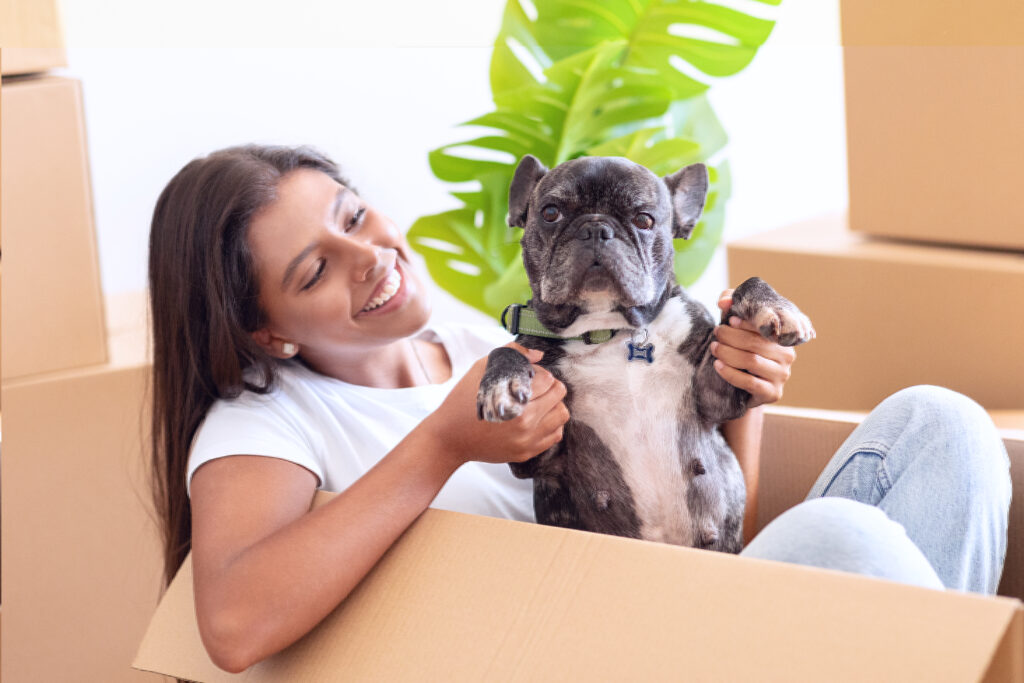Are you looking to make a local move and worry about your pets? David’s Moving has some advice for pet owners looking to make a smooth transition for their pets.
Moving to a new residence can be stressful for both people and animals. Relocating is often time-consuming, it breaks established routines, and makes life uncomfortable for people and pets alike. Certain pets are not able to adjust to their new surroundings right away. However, there are multiple strategies to mitigate the discomfort for your animal companions. See below for advice on making your new place a “Home, Sweet Home” for your furry friends.
Preparing to Move With Pets
Spend some time getting your pet ready for the impending changes before you make your big move. First, acquaint them with their crate or carrier, which will be their safe haven during the trip. Make sure there is enough room for them to move about, enough ventilation, and a secure environment.
If at all feasible, take your pet on brief visits to the new house to gradually acclimate them to the new environment. When moving day comes, they will be able to explore and acclimate to the new surroundings more easily.
Before you head over, think about pet-proofing your new home. Keep hazardous household items like cleaning products, garden materials, etc., out of your pet’s reach to make your new residence pet-safe.
Introducing Your Pet to Their New Home
It’s crucial to avoid giving your pet too much information at once after you’ve moved into your new house. Start by taking them through a room at a time, letting them smell and thoroughly examine each area. Your pet will be able to get used to their surroundings without experiencing undue stress thanks to this steady exposure. Always exercise patience and allow your pet ample time to acclimate. They might not feel entirely at ease in their new house for a few days or even weeks.
Settling In
When they are in unfamiliar places, dogs and cats will occasionally attempt to find their way back home. If your fence has openings for escape, consider sealing them off. Make sure all gates and windows are closed and secure. Until all of the packing is done, place your pet in a room with familiar items to create a safe haven for them.
Your pet may try to flee or hide if they are scared and unhappy about the move. Ensure that your cat or dog has identifying tags on them at all times. Before moving, it’s a good idea to microchip your pet; microchipped animals make it much easier for their owners to find them again.
Pets find comfort in familiar surroundings and familiar faces. Using your pet’s favorite bed, crate, blanket, and toys, try to duplicate their favorite spot in your new house. Make sure they are surrounded by familiar objects and give them their customary food and treats. After relocating, save your old blankets, beds, and food and water bowls for your pets until they’ve had time to get used to their new surroundings. When a pet is among family, they feel protected. Reassuring and consoling your pet during the transition can be achieved by designating a family member to stay with them.
Exploring Your New Neighborhood
A new neighborhood offers a plethora of sights and information to take in. Together, you can explore it to assist your pet in becoming acclimated to his or her surroundings much more quickly. Gradually introduce your pet to other neighborhood pets and your new neighbors. A dog may benefit greatly from socializing with other local pets at the dog park. Having a pet is a terrific way to meet new people, both for you and your neighbors.
Conclusion
During the first few weeks following the move, pay close attention to your pet’s behavior to spot any indications of stress or worry. Typical indications consist of:
- disappearing or hiding for periods of time
- drop in appetite
- extreme grooming
- modifications in usual habits, including their potty routine
A professional pet behaviorist or veterinarian should be consulted if you observe any of these behaviors continuing beyond a few days. They can offer advice on how to deal with these problems and guarantee your pet’s welfare throughout the transition phase. If you’re looking for a reputable moving professional to help you and your furry friends make a local move in the Kansas City area, give David’s Moving a call.





